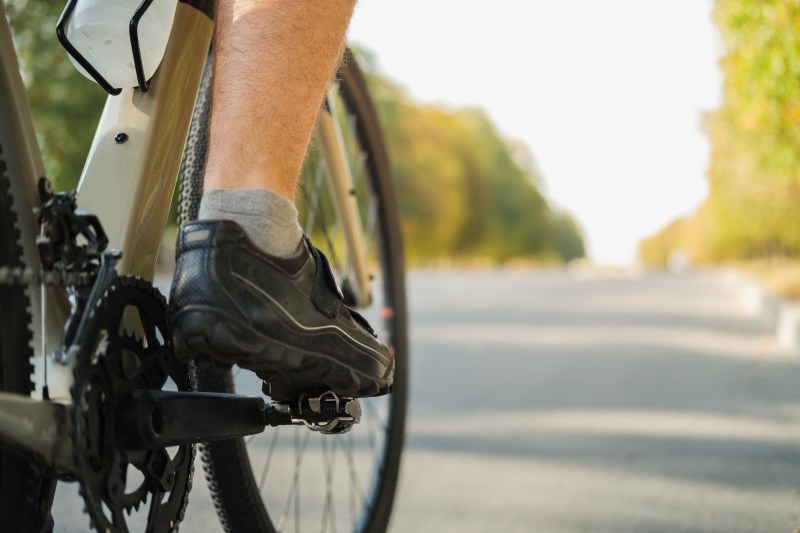
You likely have fond memories of riding your bike as a kid, but what about now? Is your bike gathering dust in the garage? If you are wondering, “Is cycling good for weight loss?” then you will be happy to hear that it can be a great tool to utilize on your fitness journey! In general, there are numerous benefits to cycling, including free transportation and getting to spend time outdoors.
More of us are finding ourselves at home behind a computer screen more than ever before. The modern American adult spends up to 11 hours a day sitting, and if you work a desk job, it’s very likely that you are hitting that number. In order to get exercise, most people hop into a car and head over to the gym or attempt to gain the self-motivation to work out at home. But imagine if getting from point A to point B provided us with the daily exercise required to meet our fitness goals.
Can you lose belly fat by cycling?

Belly fat is infamously stubborn and difficult to get rid of, so finding an effective way to defeat it has become a hot topic. To understand if cycling offers victory in the battle of the bulge, it’s important to understand the mechanisms of losing weight.
It’s as simple as this: You lose weight by burning more calories than you consume through food. Any physical activity will burn energy by utilizing the calories we ingest. Say you want to ride your bike to work. You first take in a hearty breakfast, say, 500 calories, before hitting the streets on your pocket rocket. You start working up a sweat, and as you do so, your body depletes the energy derived from the breakfast you ate.
Once your body has burnt off your 500-calorie breakfast, it has to turn to your body for additional energy reserves to get up that cursed hill that you dread. Your body then turns to your fat reserves to complete this task — some of which could be belly fat. So, riding a bike will burn belly fat if we expend more energy whilst riding the bike than the energy we gained from the day’s food. However, it is important to keep in mind that everyone burns fat in certain areas before others based on factors such as gender and genetics.
Diet is fundamentally as important in weight loss as exercise. By this logic, then, any physical activity can be used to burn off calories, right? Right! However, we are impatient and pressed for time. Taking a walk burns calories, but people run because it burns many more calories in a shorter period of time. So, the next important question is, “How many calories are burnt through cycling compared to other forms of exercise?” We turn to science and data to answer this question.
This Harvard Study looked at calories burned in 30 minutes for people of three different weight classes across a massive range of exercises. The following table summarizes the data important to us, showing calories burnt in a 185-pound individual performing the activity for 30 minutes.
| Activity | Calories Burnt |
| Weight Lifting: General | 133 |
| Circuit Training: General | 355 |
| Aerobics: Low Impact | 244 |
| Running: 5pm (12min/mile) | 355 |
| Bicycling Stationary: Moderate | 311 |
| Bicycling: 12-13.9 mph | 355 |
| Bicycling: BMX or Mountain | 377 |
As you can see, bicycling does burn an impressive amount of calories compared to other common forms of exercise. Here, the type of cycling, as well as its length and intensity, becomes critical when determining the effectiveness of the exercise. What we mean by that is this — a 30-minute HIIT cycling class at the gym looks very different from a leisurely 30-minute Sunday bicycle ride to the nearby grocery store on a flat road. The key here is exercise intensity and length.
Want to lose weight and get fit by riding a bike? The great news is that we’ve shown that cycling is, in fact, highly effective at burning calories and, therefore, body fat. Now it’s time to shift up a gear.
How much should I cycle a day to lose weight?

The answer to this question largely depends on your age, starting weight, and fitness level. A person who cycles every day will use fewer calories for the same cycle than someone who has never cycled before because their body has adapted to this exercise. So, in terms of how many calories a person should aim to burn through each cycling session, there is no one answer. But that’s a disappointing answer, so let’s try to do better.
Many trainers, health gurus, and exercise advocates say that burning 400 to 500 calories a day through exercise is a good goal to set your sights on. In this article, certified trainer Brooke Taylor recommends burning 500 calories in exercise sessions five times a week. Using this rule of thumb and the data used in the Harvard study, we can determine how long it would take to reach the 500-calorie mark performing these cycling exercises.
There you have it! It takes approximately 45 minutes of moderately intense cycling for most adults to reach their calorie expenditure needs through cycling. Do this five times a week, and you’ll burn 2,500 calories!
| Cycling Type | Minutes Required to Burn 500 Calories |
| Bicycling Stationary: Moderate Intensity | 48 min |
| Bicycling: 12-13.9 mph | 42 min |
| Bicycling: BMX or Mountain | 39 min |
Cycling can be an affordable and efficient way to get in some exercise and lose weight. With the added bonus of being an environmentally friendly form of transport, bike riding to and from work or to the grocery store can be a great way to reach your daily exercise goals. If you are looking at using a bicycle as your main form of exercise, a good way to start is by riding for 45 minutes at moderate intensity. This will burn approximately 500 calories per cycling session, setting you on track to meet average weekly exercise goals.
Is 30 minutes of cycling a day enough?

While we do mention 45 minutes as being a great place to start, 30 minutes daily will certainly make a positive impact on your health as well. You would likely burn around 330 calories in that time period, and that would add up to 2,310 calories per week if you are consistent. If your work or school is 15 to 30 minutes away, consider making biking there a part of your routine.
Editors' Recommendations
- Your sedentary lifestyle is doing so much damage — here’s what to know and how to get moving
- Stationary bike benefits: Cardiovascular, weight loss, and more
- Experts reveal how to lose weight while you sleep
- 4 effective fat-burning workouts to help you lose weight
- Flybird Fitness review: How does this weight bench set measure up to Bowflex?




